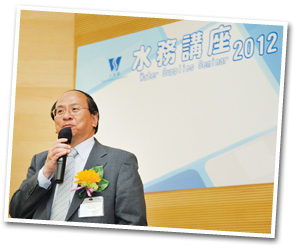
|
Over the past two years, by proactively adjusting and managing our supplies of water to precisely meet demand and through extensively promoted conservation measures, we have reduced Hong Kong's fresh water consumption levels. There has also been a surge in community-wide awareness and commitment to the need to conserve precious water supplies.
At departmental level, we have limited water loss across the more than 8 000 km of water mains in our distribution system through an aggressive replacement and rehabilitation programme applied to aging water mains and by using improved leak detection technology. New demand management measures have been implemented and we have continued to look at innovative ways to both save water and curb future demand.
The replacement and rehabilitation programme which has improved the service delivery of 3 000 km of aged pipelines to date is now over 70 per cent complete and remains on track for substantial completion in 2015 as scheduled. Pipeline bursts have been significantly reduced and we are now taking steps to prepare for the next phase of replacement and rehabilitation work.
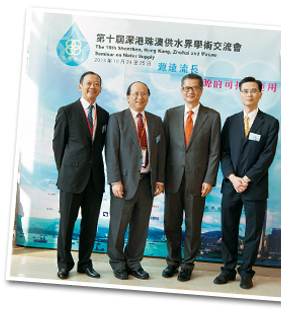

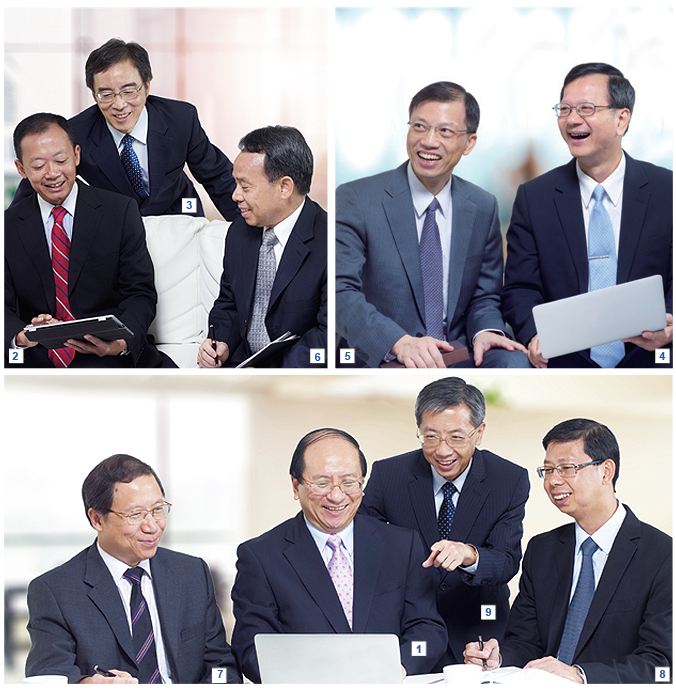
|
|
|
||||||
|
|
|
||||||
|
|
|
| CREATING A CULTURE OF CONSERVATION | ||||
|
||||
Managing water resources, as outlined in the Government's Total Water Management strategy released in 2008, requires us to carefully balance supply and demand. Whilst we have moved forward in terms of managing demand for water, we have also made tremendous progress in the past 12 months in terms of securing fresh and salt water supplies for both the immediate and long term. These supplies take into account Hong Kong's predicted population growth and patterns of development as well as future demands of the Pearl River Delta.
Currently about 80 per cent of Hong Kong's fresh water comes to us directly from the Dongjiang River through an greement that broadly secures supplies for the long term. We will start negotiations next year with the Guangdong authorities on a further detailed three-year agreement covering the price, volume of water that we can uplift and its quality standards.
Whilst we are guaranteed water from the Dongjiang River, we remain conscious of the growing level of demand for water to drive the Pearl River Delta's economic growth. In addition to Hong Kong, the Dongjiang River supports almost 40 million people in the southern Chinese cities of Heyuan, Huizhou, Dongguan, Shenzhen and Guangzhou.
Currently about 20 per cent of Hong Kong's fresh water needs are met through rainfall. To complement this, we are also actively exploring other water source schemes such as grey-water reuse and rainwater harvesting. Pilot schemes for the reuse of reclaimed water are producing positive results. General end uses for this non-potable water include cleansing in housing developments, landscaping and irrigation. We have also made good progress on the planning and initial design for a desalination plant to be located on 10 hectares of land at Tseung Kwan O. Once the current study is completed, we will undertake a public engagement exercise and prepare to put our case to the Legislative Council for funding. The plant is planned to be commissioned around 2020, producing initially a volume of fresh water equivalent to about 5 per cent of our demand. Once fully operational, it will be capable of producing the equivalent to 10 per cent of fresh water demand.
Meanwhile, we are piping seawater for toilet flushing to over 80 per cent of Hong Kong's population and the necessary seawater pumping stations and pipeline infrastructure are being upgraded and expanded.

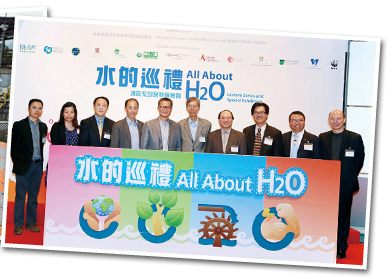
By degrees, these measures add up to a higher level of self sufficiency. However, careful long term planning is important and we are collaborating with Government departments and academia to refine forecast requirements. Over the past 12 months, we have worked closely with relevant departments on scenarios covering housing needs and associated water requirements. Ongoing water reclamation and a potential second desalination plant are important considerations in long term planning scenarios.
Countries are working individually and collaboratively on technologies and efficient practices to cope with the increasing stress on water resources. In Hong Kong, we have shared best practices with authorities from Singapore, Malaysia and representatives from cities on the Mainland. We have also worked closely with the private sector and universities in Hong Kong and overseas on important research and development projects that offer innovative solutions designed to meet challenges specific to Hong Kong. In-house initiatives include solutions ranging from the use of zebrafish as biosensors alerting abnormalities in water quality to the use of hydro electricity and wave generated power for use in operational aspects of treatment works and pumping stations. These solutions have originated from ideas put forward and developed by on-site staff and I am pleased to say that a number of our innovations have been recognised with international awards.
In a move that signifies the importance of water in all future planning, The Advisory Committee on Water Resources and Quality of Water Supplies has been operating with an expanded remit to advise Government on matters relating to both water resources and quality. It will study alternative sources of water. A top priority is the expanded use of rain water harvesting.
It is now 162 years since the first official wells were sunk and the Government's public water supply system was launched. Today, we have a reliable and efficient supply system that covers the territory. This is a solid platform from which future generations across a spectrum of disciplines can ensure that water scarcity will not limit Hong Kong's economic growth. There has been a seismic level shift in attitudes towards water, both within the Water Supplies Department and throughout the community. We recognise and understand the increasing competition for water within our geographic region and the need for precise and appropriate management strategies to meet the challenges that lie ahead.

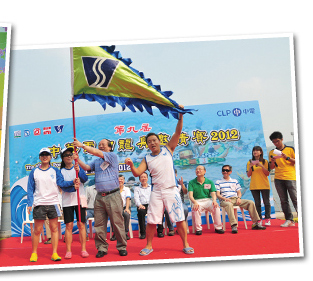
 |
 |
|
Members of staff continue to prove themselves at all levels, embracing opportunities to innovate and collaborating, both
internally and externally, to improve water management practice. The Department is now a “learning institution”; a “manpower developer” and a “leader development organisation”, using the commonly-used management nomenclature, continuously exploring new frontiers above our solid foundations. We are building a strong dialogue with community stakeholders, green groups, NGOs and academia to develop solutions that lessen the stress on our water resources. I thank all who have supported the Department over the past five years and I appeal to all involved to continue to work together to secure supplies of safe, clean water for Hong Kong in the decades ahead.
|
|||||
|
|||||


